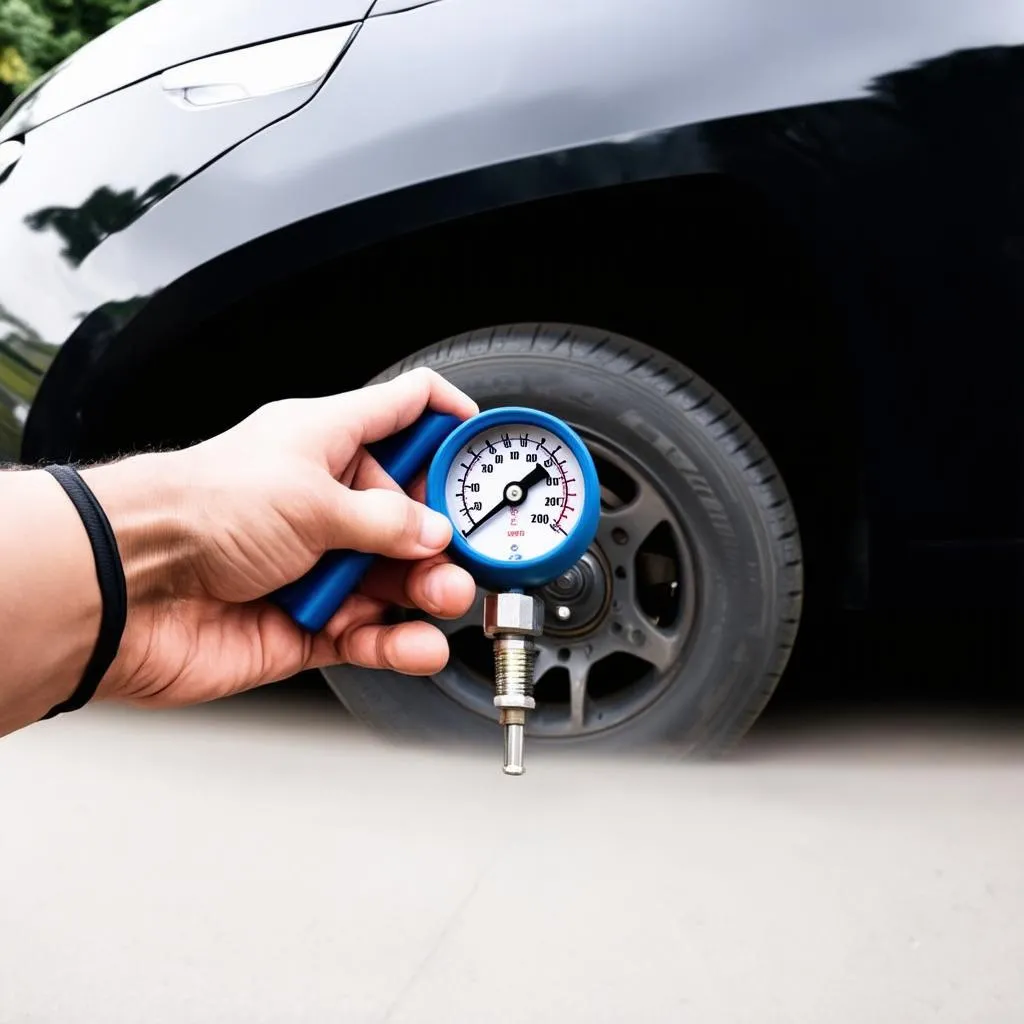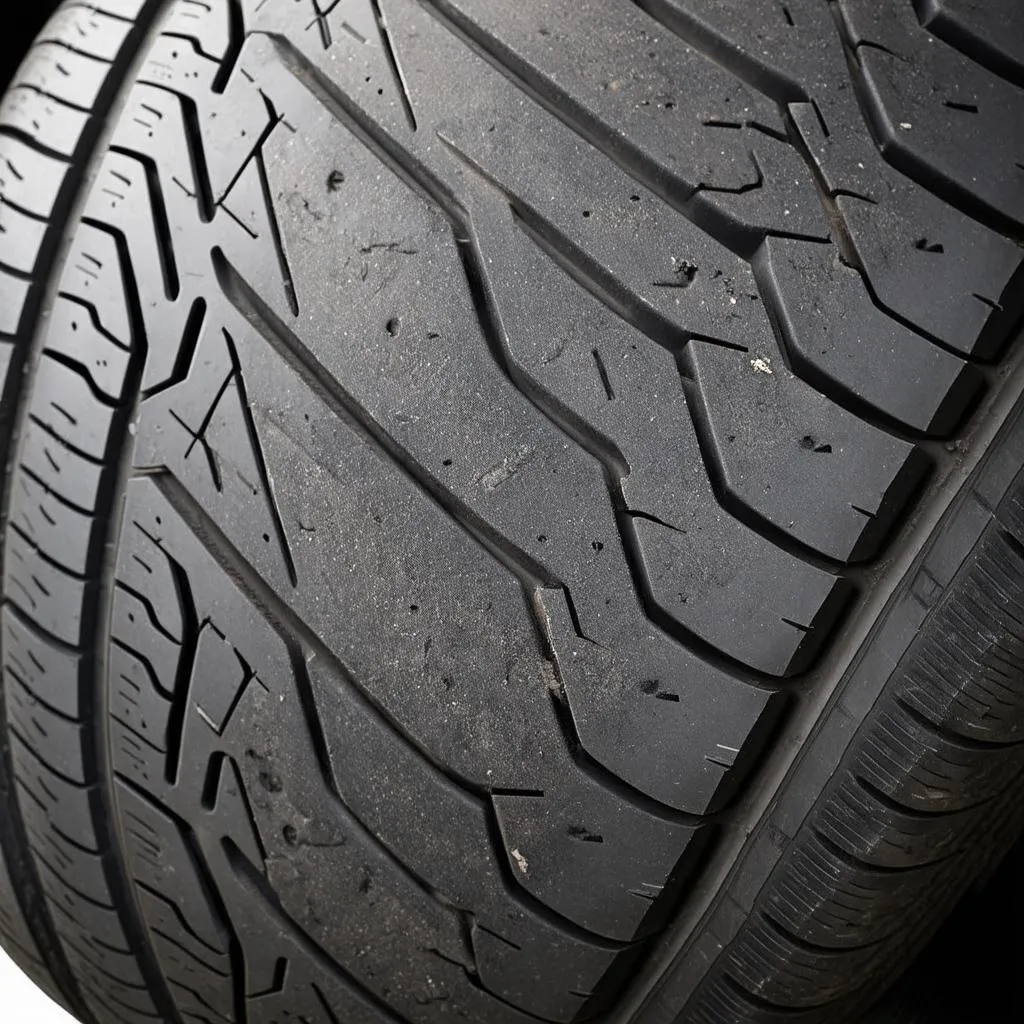Imagine this: you’re cruising down the Pacific Coast Highway, California sunshine warming your face, the wind whipping through your hair. Suddenly, you feel a disconcerting wobble in your steering wheel. Your heart sinks as you pull over and see it – a flat tire. Don’t let this nightmare become your reality. Understanding and regularly using an air pressure gauge for your car tires can save you from dangerous and inconvenient situations like this.
Why is Tire Pressure So Important?
Whether you’re a seasoned mechanic at a busy shop on Peachtree Street in Atlanta or just a regular driver who wants to keep their car in top shape, you know that tire pressure is a big deal. But why is it so crucial?
-
Safety First: Maintaining the correct tire pressure, as recommended by your car manufacturer (usually found on a sticker inside the driver’s side door jamb), is paramount for safe driving. Underinflated tires can overheat, increasing the risk of a blowout at high speeds. Overinflated tires, on the other hand, reduce tire contact with the road, compromising traction and braking efficiency, particularly on wet surfaces.
-
Smooth Ride & Fuel Efficiency: Properly inflated tires contribute to a smoother, more comfortable ride. They also affect your car’s fuel efficiency. Underinflated tires create more rolling resistance, forcing your engine to work harder and burn more fuel. According to automotive expert Dr. Emily Carter, author of “The Complete Guide to Car Maintenance”, “Maintaining correct tire pressure can improve your fuel economy by up to 3%.”
-
Increased Tire Lifespan: Overinflation can cause the center of your tires to wear out faster, while underinflation leads to excessive wear on the outer edges. Proper inflation ensures even wear and tear, extending the life of your tires and saving you money in the long run.
Choosing the Right Air Pressure Gauge
Now that we understand the importance of tire pressure, let’s talk about how to measure it accurately. Enter the air pressure gauge – a simple yet indispensable tool for every car owner.
There are several types available:
- Pencil Gauges: These are the most basic and affordable option. While they may lack advanced features, they are generally accurate and easy to use.
- Dial Gauges: These gauges feature a circular dial with a needle indicating the pressure reading. They are known for their durability and clear display.
- Digital Gauges: These offer the highest level of accuracy and often come with additional features like backlights and automatic shut-off.
No matter which type you choose, ensure it reads in PSI (pounds per square inch), the unit used for tire pressure in the US.
How to Use an Air Pressure Gauge
Using an air pressure gauge is simple:
- Check Your Recommended Tire Pressure: Refer to your vehicle’s owner’s manual or the sticker inside the driver’s side door jamb.
- Remove the Valve Cap: Unscrew the valve cap from your tire’s valve stem.
- Press the Gauge onto the Valve Stem: Place the gauge firmly onto the valve stem and press down until you hear a hiss of air escaping. Ensure a tight seal to get an accurate reading.
- Read the Pressure: The gauge will display the tire pressure.
- Adjust Tire Pressure if Necessary: If the pressure is too low, add air using an air compressor. If it’s too high, release air by pressing the metal pin in the center of the valve stem.
- Repeat for Each Tire: Don’t forget to check the pressure in your spare tire as well.
 Checking Tire Pressure
Checking Tire Pressure
FAQs about Air Pressure Gauges and Tire Pressure
How Often Should I Check My Tire Pressure?
It’s best to check your tire pressure at least once a month and before long road trips. Remember, tire pressure fluctuates with temperature, so it’s essential to check during different weather conditions.
Can I Use the Gauge on My Air Compressor?
While some air compressors come with built-in gauges, their accuracy can be unreliable. It’s always recommended to use a separate, dedicated air pressure gauge for the most accurate readings.
What Happens If I Overinflate My Tires?
Overinflating your tires can make your ride bumpy and reduce traction, increasing your risk of skidding. It can also lead to premature wear and tear on the center of your tires.
 Close-Up of Car Tire Tread
Close-Up of Car Tire Tread
Keep Rolling Safely with the Right Tools
An air pressure gauge is an inexpensive but invaluable tool that every car owner should have. Regular checks and adjustments to your tire pressure will not only save you from the hassle of a flat tire but also ensure a safer, smoother, and more fuel-efficient ride. Remember, a little maintenance goes a long way in keeping your car running in top condition.
Need help choosing the right diagnostic tools for your car? Contact us via WhatsApp at +84767531508. Our team of automotive experts is available 24/7 to assist you.
Looking for more car maintenance tips? Check out these articles: